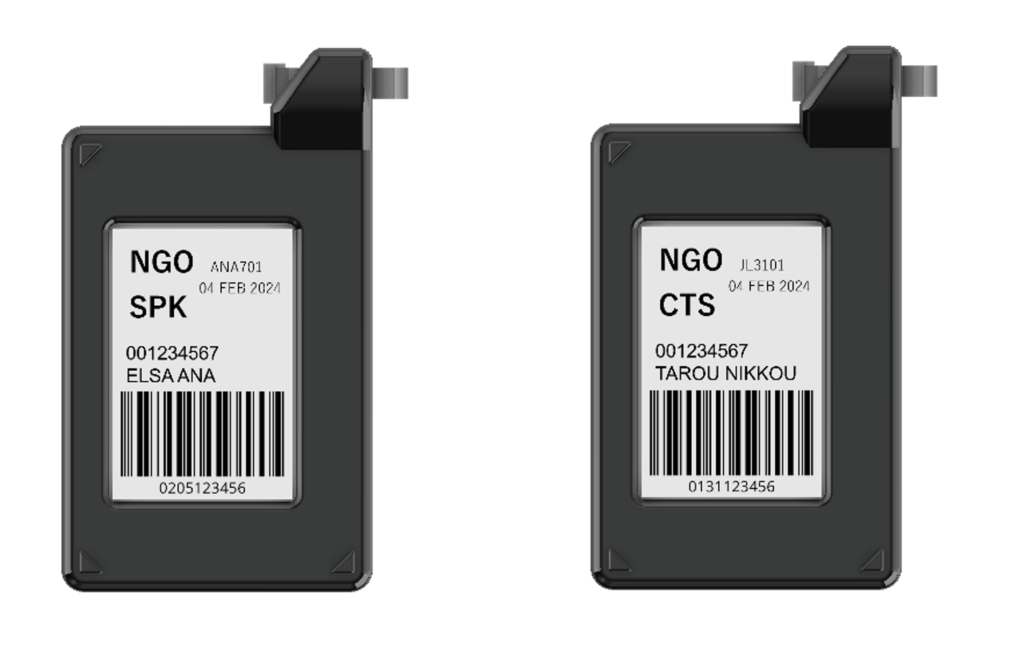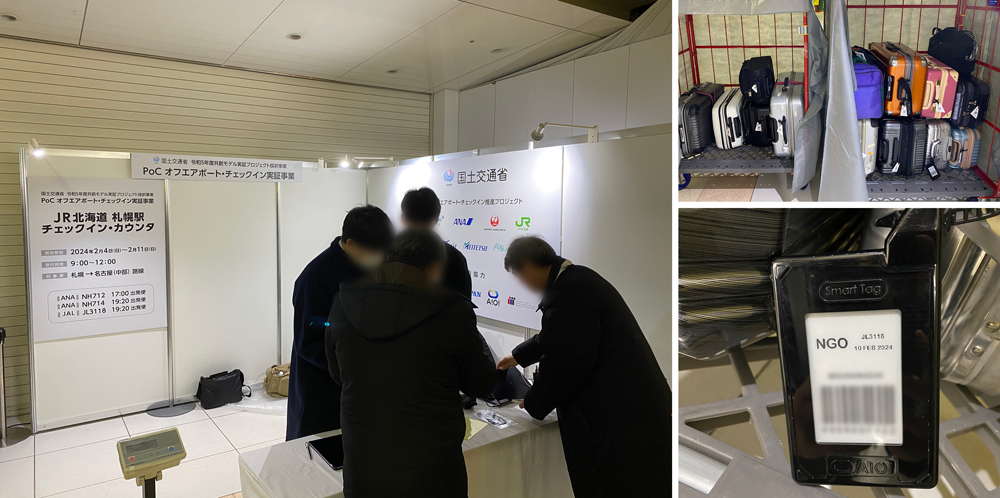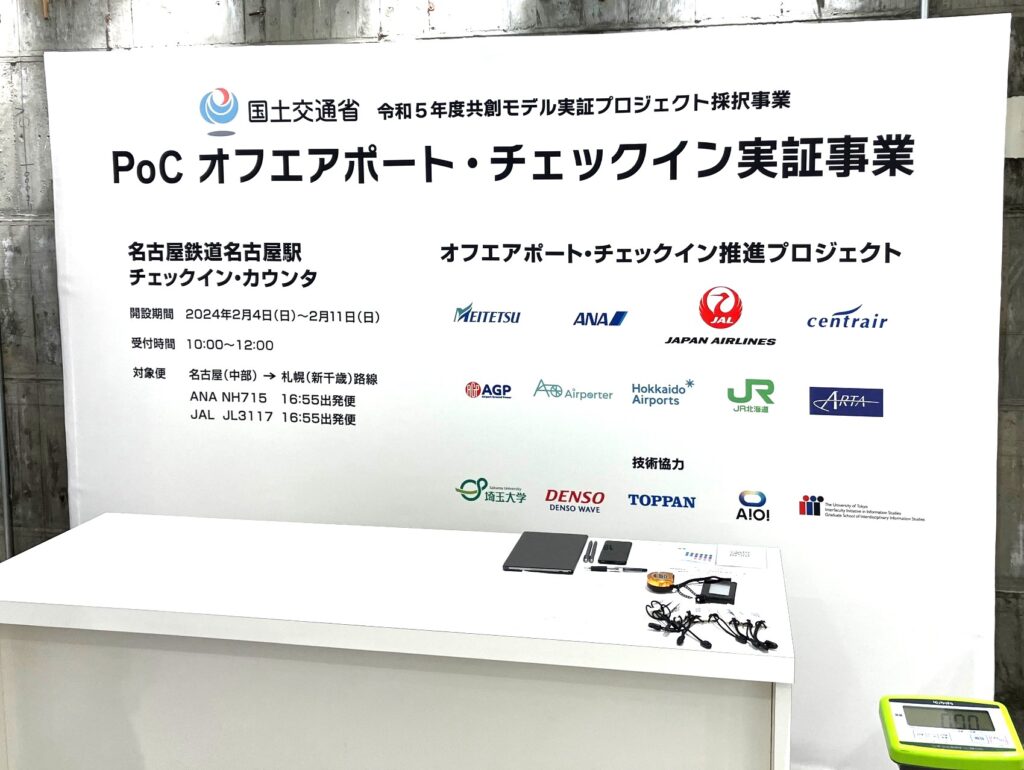AIOI Systems Co., Ltd. (AIOI) has been working with Off Airport Check-in (OAC) Promotion Project (All Nippon Airways (ANA), Japan Airlines (JAL), Central Japan International Airport Corporation, Hokkaido Airport Corporation, Nagoya Railroad, Airporter, Inc., AGP Corporation, NPO Alliance of Research for advanced Technology at Airports (ARTA), etc.), and conducts operation test of Electronic Baggage Tag (EBT) using “Visible RFID” Smart Card equipped with electronic paper from February 4th through February 11th, 2024.
With the proliferation of web check-in by Airline companies, smartphone QR boarding passes have become common, but passengers with check-in baggage still need to wait in line at airport counters. With EBT, in the future passengers will be able to generate their own baggage tags and EBTs from their own smartphones or computers during web check-in. Passengers will be able to drop off their baggage with EBT attached at the airport drop area and pick up their baggage at the arrival airport without having to stop at the check-in counter at the departure airport.
In this EBT operational test, EBT is attached to the baggage of a limited number of passengers, and during the OAC demonstration period, two round trips per day will be made to confirm the practicality and durability of the tags.
EBT operation test is supported by OAC Promotion Project companies and Denso Wave Corporation and Saitama University Graduate School of Science and Engineering, Manabe Laboratory for technical cooperation.
About EBT
- Equipped with E Ink e-Paper
- Battery-free and rewritable more than 1 million times
- Contactless NFC (Near Field Communication) and UHF communication functions
- Airport code, flight number, date, time, name, tag number and barcode on electronic paper
- Tag-specific RFID code in the smart card’s internal memory tied to passenger information

EBT Electronic Baggage Tag
Off Airport Check-in (OAC: Off Airport Check-in) is a service that simplifies airport procedures by allowing baggage to be checked in at non-airport locations. Proof of Concept of OAC is conducted at Central Japan International Airport and New Chitose Airport for eight days from February 4 to February 11, 2024. This experiment is designed to address the following issues: congestion caused by baggage carried by tourists, unexpanded tourism consumption in a wide area due to the limited range of activities caused by baggage retention,
and difficulties in maintaining routes and controlling fares due to a decrease in the number of users of public transportation in the area. The purpose of this service is to reduce congestion on regional public transportation to the airport by separating passengers’ baggage from that of tourists, and to increase convenience of sightseeing tours in a wide area and tourism consumption by realizing “Hands Free Travel” sightseeing. This simplifies the procedures at the airport. Passengers will also be able to enjoy sightseeing without baggage, improving the convenience of travel from the Nagoya and Sapporo areas to the airport. The OAC application, which is linked to the airline’s smartphone application, provides information on traffic and sightseeing information and baggage status to OAC users’ smartphones based on the location information of baggage and passengers to support safe and secure sightseeing trips.


